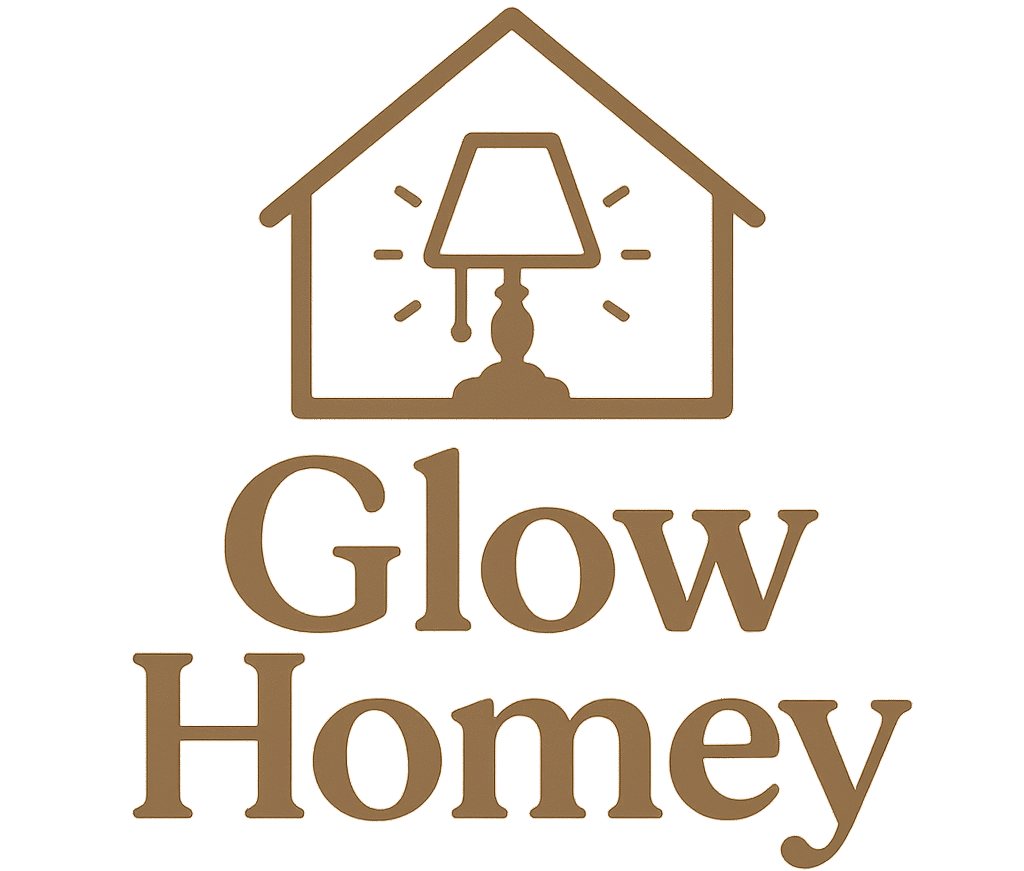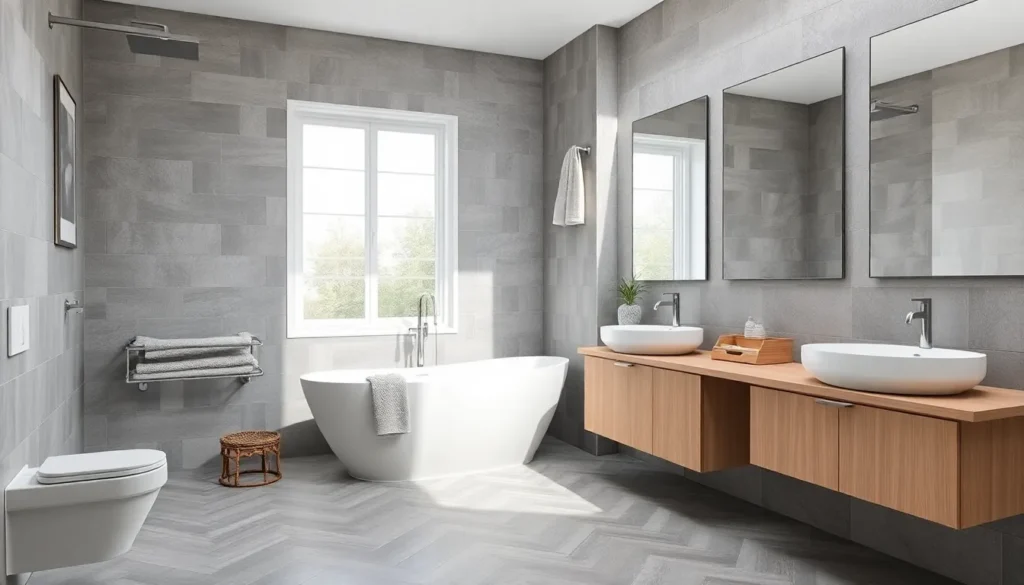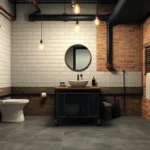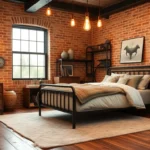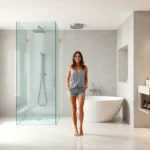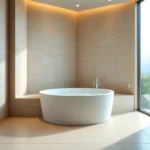Grey tiles have quietly become the ultimate secret weapon for creating stunning bathroom spaces that feel both timeless and thoroughly modern. We’ve watched this versatile color transform countless bathrooms from bland to breathtaking, proving that neutral doesn’t have to mean boring.
Whether you’re dreaming of a sleek contemporary retreat or a cozy traditional sanctuary, grey tiles offer endless possibilities that work with virtually any design style. From soft dove grey subway tiles to dramatic charcoal stone patterns, we’ve discovered that this adaptable shade creates the perfect backdrop for both bold statement pieces and subtle elegance.
The beauty of grey lies in its incredible flexibility – it pairs effortlessly with crisp whites for a clean spa-like feel, complements warm wood tones for rustic charm, or matches with metallic accents for luxury appeal. We’re excited to share our favorite grey tiled bathroom ideas that’ll inspire your next renovation project.
Classic Grey Subway Tile Designs for Timeless Appeal
Grey subway tiles remain the ultimate choice for creating sophisticated bathroom spaces that never go out of style. These rectangular beauties offer endless design possibilities while maintaining their classic charm.
Traditional Horizontal Layout with White Grout
Horizontal subway tile installation creates the most recognizable and beloved bathroom aesthetic we see in countless design magazines. This timeless arrangement features 3×6 inch grey tiles laid in straight, overlapping rows that mirror the original New York subway stations from the early 1900s.
White grout lines provide the perfect contrast against grey tiles, creating crisp definition that makes each tile pop. We recommend using bright white or antique white grout to achieve this classic look that works beautifully in both small powder rooms and spacious master bathrooms.
Installation tips for horizontal layouts include starting from the center point of your wall and working outward to ensure balanced tile placement. Professional installers typically use tile spacers ranging from 1/16 inch to 1/8 inch to maintain consistent grout lines throughout the project.
Vertical Stacked Pattern for Modern Twist
Vertical subway tile layouts transform traditional expectations by rotating the classic horizontal design 90 degrees. This contemporary approach makes bathroom walls appear taller while adding visual drama to spaces with standard 8-foot or 9-foot ceilings.
Stacked installation eliminates the traditional brick-like offset pattern, creating clean vertical lines that draw the eye upward. We’ve seen this technique work exceptionally well in narrow bathrooms where height emphasis helps counteract cramped feelings.
Color variations in grey subway tiles become more pronounced in vertical arrangements, allowing subtle differences in shade to create natural striping effects. Light grey tiles paired with darker grey accents can establish sophisticated patterns without overwhelming smaller bathroom spaces.
Herringbone Arrangement for Visual Interest
Herringbone patterns showcase grey subway tiles in their most ever-changing configuration, creating zigzag designs that add movement and energy to bathroom walls. This installation method requires cutting tiles at 45-degree angles to achieve the characteristic V-shaped pattern.
Design impact from herringbone layouts transforms plain walls into focal points that command attention without requiring additional decorative elements. We particularly love this pattern behind floating vanities or as accent walls in shower enclosures.
Planning considerations for herringbone installations include ordering 10-15% extra tiles to account for cuts and potential breakage during the angled cutting process. Professional installation becomes especially valuable for herringbone patterns due to the precision required for proper alignment and consistent spacing.
Large Format Grey Tiles for Contemporary Minimalism
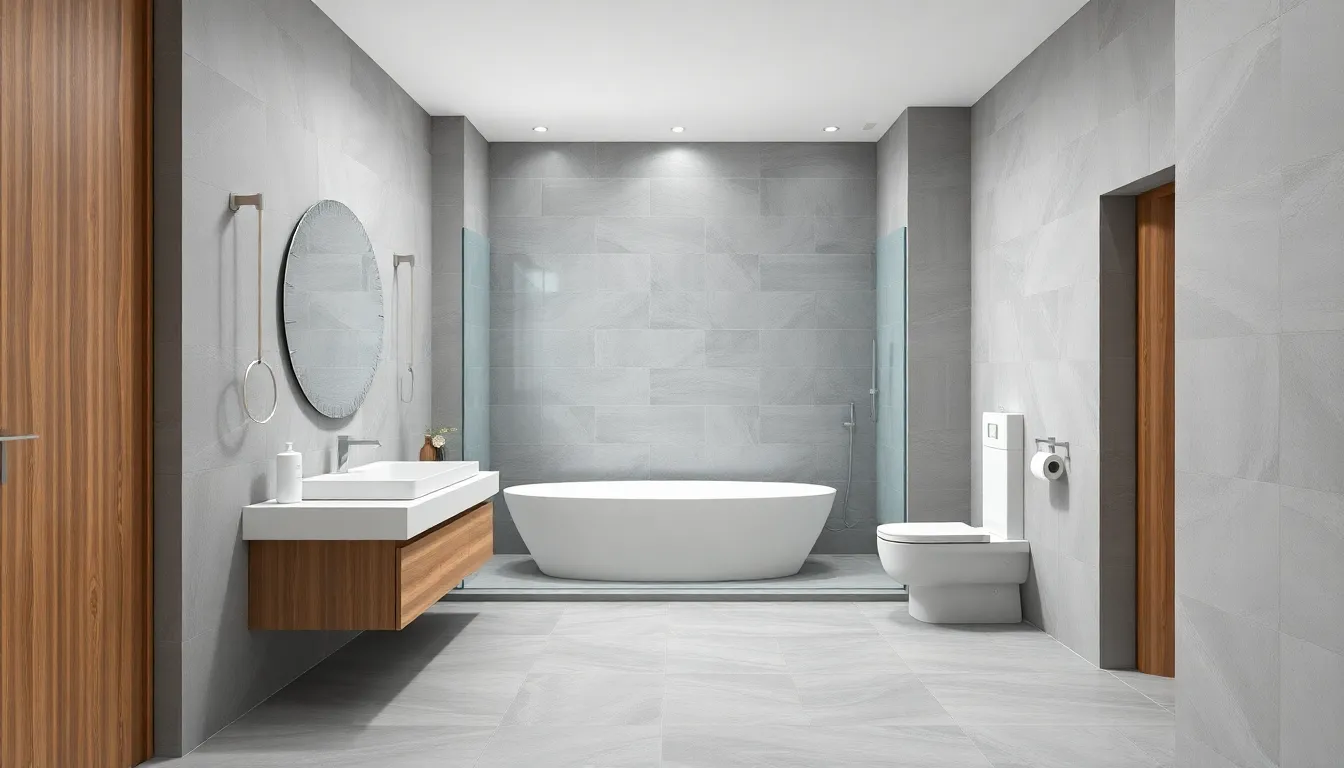
Large format grey tiles deliver the perfect foundation for contemporary minimalist bathrooms that prioritize clean lines and uncluttered spaces. We’ve seen these expansive tiles transform ordinary bathrooms into sophisticated retreats by reducing visual noise and creating seamless surfaces that enhance the sense of spaciousness.
Floor-to-Ceiling Installation Techniques
Installing grey tiles from floor to ceiling creates a continuous visual flow that makes bathrooms appear larger and more cohesive. We recommend using tile leveling systems during installation to ensure perfectly flat surfaces that maintain the minimalist aesthetic. Careful alignment becomes crucial when working with large format tiles, as any deviation from a uniform grid pattern will be immediately noticeable.
Planning your layout before installation helps avoid awkward cuts and ensures symmetrical placement around fixtures and corners. We’ve found that starting from the center point of the most visible wall creates the best visual balance. Professional installers often use laser levels to maintain consistent spacing throughout the entire installation process.
Seamless Look with Minimal Grout Lines
Achieving a seamless appearance requires selecting rectified edge tiles that fit together with precision and minimal gaps. We suggest using grout lines no wider than 1/8 inch to maintain the clean, uninterrupted surface that defines contemporary minimalism. Grey grout that matches your tile color helps the lines virtually disappear into the overall design.
Epoxy grout offers superior stain resistance and maintains its color consistency over time compared to traditional cement based options. We’ve observed that slightly darker grout than the tile color often provides better long term appearance than exact color matches. Proper grout sealing every 12 to 18 months keeps the seamless look intact for years.
Combining Different Grey Shades
Layering multiple grey tones adds depth and visual interest while maintaining the minimalist principle of restraint. We often pair light grey walls with darker grey accent tiles or feature areas to create subtle contrast without overwhelming the space. Textural variations between smooth and lightly textured surfaces enhance this layered approach.
Strategic placement of different grey shades can define exact areas within the bathroom, such as using darker tiles in the shower area and lighter tones elsewhere. We recommend limiting yourself to two or three grey variations to avoid creating visual chaos that contradicts minimalist design goals. Natural wood accents or white fixtures complement these grey combinations perfectly for a balanced contemporary finish.
Textured Grey Tiles to Add Depth and Character
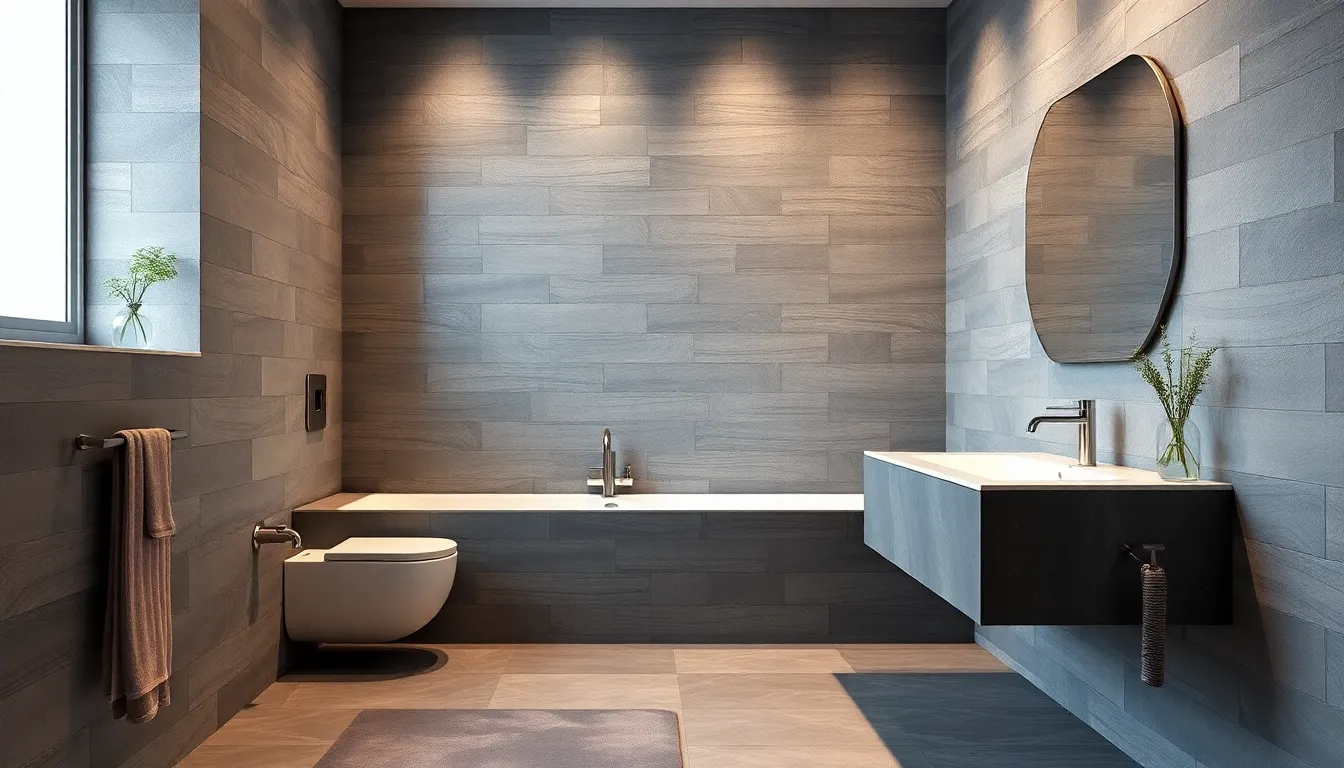
Moving beyond smooth surfaces opens up endless possibilities for creating visual interest in your bathroom. Textured grey tiles transform flat walls into ever-changing focal points that catch light and shadow throughout the day.
Natural Stone-Look Porcelain Options
Porcelain tiles mimicking natural stone deliver the sophisticated beauty of marble or granite without the maintenance concerns. These engineered surfaces resist moisture and stains while providing the luxurious appearance that makes bathrooms feel like spa retreats.
Modern manufacturing techniques create remarkably realistic veining patterns and surface textures that rival authentic stone materials. We’ve seen installations where guests couldn’t distinguish between genuine marble and high-quality porcelain alternatives.
Installation becomes more straightforward with porcelain options since they’re lighter and more uniform than natural stone. The consistent sizing eliminates the planning challenges that come with natural stone variations.
Durability surpasses natural materials while offering similar aesthetic appeal for decades of bathroom enjoyment. Porcelain won’t require sealing or special cleaning products that stone surfaces demand.
Slate-Inspired Finishes for Rustic Charm
Slate textured tiles bring earthy warmth and natural character to bathroom spaces seeking rustic appeal. These surfaces feature subtle color variations and rough textures that create cozy, cabin-like atmospheres.
Installation works beautifully on accent walls behind vanities or in shower areas where the texture adds visual weight. The irregular surface patterns help hide water spots and soap residue better than smooth tiles.
Color depth varies within individual tiles, creating organic movement that complements wooden vanities and bronze fixtures perfectly. We recommend pairing these finishes with warm lighting to enhance the natural stone appearance.
Maintenance remains simple even though the textured surface since modern slate-look tiles resist staining and scratching. Regular cleaning with standard bathroom cleaners keeps these surfaces looking fresh without special treatments.
3D Wall Tiles for Dramatic Effect
Three-dimensional wall tiles create stunning focal points that transform ordinary bathroom walls into architectural features. These sculptural surfaces cast shadows and reflect light to add movement and energy to the space.
Wave patterns flow across walls like frozen water, creating perfect harmony in bathroom environments. Geometric designs offer bold modern statements that work especially well in contemporary spaces with clean lines.
Strategic placement maximizes visual impact without overwhelming the room’s proportions. We suggest using 3D tiles on single accent walls rather than throughout entire bathrooms to maintain balance.
Lighting placement becomes crucial for showcasing the dimensional effects properly. Angled LED strips or wall sconces highlight the texture variations and create dramatic shadow play throughout different times of day.
Mixed Grey Tile Patterns for Dynamic Visual Impact
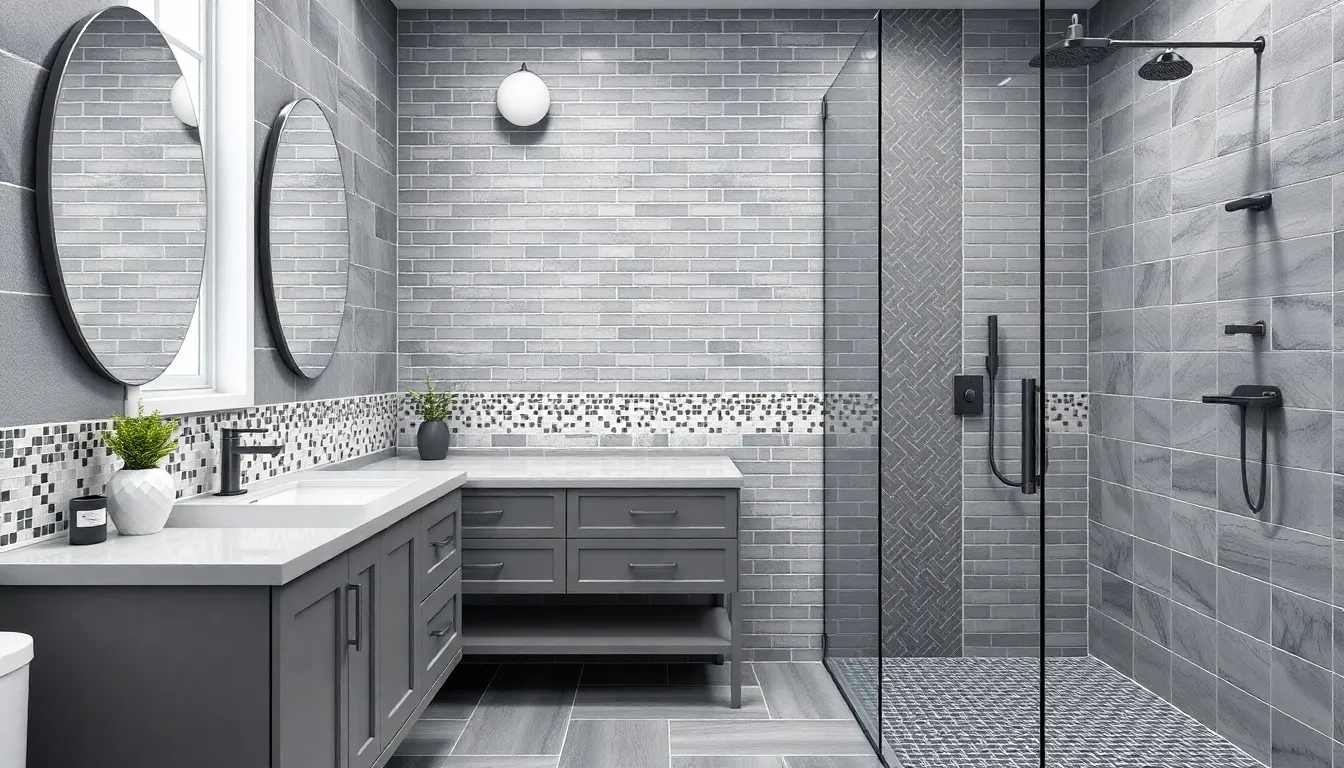
Combining different grey tile patterns transforms ordinary bathroom spaces into visually striking environments. We’ve discovered that mixing textures, sizes, and patterns creates ever-changing depth that single-tile approaches simply can’t achieve.
Combining Small and Large Format Tiles
Contrasting tile sizes creates immediate visual interest that draws the eye throughout your bathroom space. We recommend pairing small mosaic tiles with larger subway or slab tiles to establish clear focal points and define different functional areas.
Strategic placement elevates your design approach. Position smaller tiles around sinks, in shower niches, or as wainscoting details while covering floors and main wall areas with larger format tiles. This technique creates natural boundaries that make your bathroom feel more organized and intentional.
Scale relationships matter significantly in tile combinations. We suggest using 1-inch mosaic tiles alongside 12×24-inch or larger format tiles for maximum contrast. The size difference creates a sophisticated hierarchy that guides visitors’ attention to key design elements.
Installation considerations require careful planning. Start with your large format tiles as the foundation, then add smaller tiles as accent elements. This approach ensures proper alignment and reduces cutting waste during installation.
Creating Accent Walls with Patterned Designs
Patterned accent walls serve as stunning focal points that transform bland bathroom spaces into design showcases. We’ve found that incorporating oriental patterns or geometric designs on single walls creates dramatic impact without overwhelming the entire room.
Oriental patterns bring sophisticated elegance to modern bathrooms. These intricate designs work particularly well behind vanities or in shower areas where they can be fully appreciated. The detailed motifs add cultural richness that complements grey’s neutral foundation.
Geometric patterns offer contemporary appeal through clean lines and modern aesthetics. Hexagonal tiles, chevron layouts, and diamond patterns create movement and energy. These designs work exceptionally well in powder rooms or as shower feature walls.
Pattern placement requires strategic consideration for maximum impact. We recommend limiting patterned tiles to one accent wall per bathroom to maintain visual balance. This focused approach prevents pattern overload while creating a clear design statement.
Mosaic Grey Tile Feature Areas
Mosaic tiles excel at creating intimate focal points that add texture and visual interest to exact bathroom zones. We use these smaller format tiles strategically to highlight important areas like shower walls, vanity backsplashes, or tub surrounds.
Shower areas benefit tremendously from mosaic tile applications. The smaller scale provides better slip resistance while creating spa-like atmospheres. Gradient effects using different grey shades can make shower spaces feel more luxurious and custom-designed.
Border applications using mosaic tiles create cohesive design transitions. We often install mosaic borders around larger tiles to frame different areas and add decorative detail. This technique works particularly well around mirrors, windows, or at the junction between wall and floor tiles.
Installation techniques for mosaics require attention to detail. Pre-mounted mesh backing sheets simplify installation while ensuring consistent spacing. We recommend using matching grey grout to maintain clean lines and prevent busy visual patterns that can detract from the overall design.
Light Grey Tiles for Bright and Airy Bathrooms
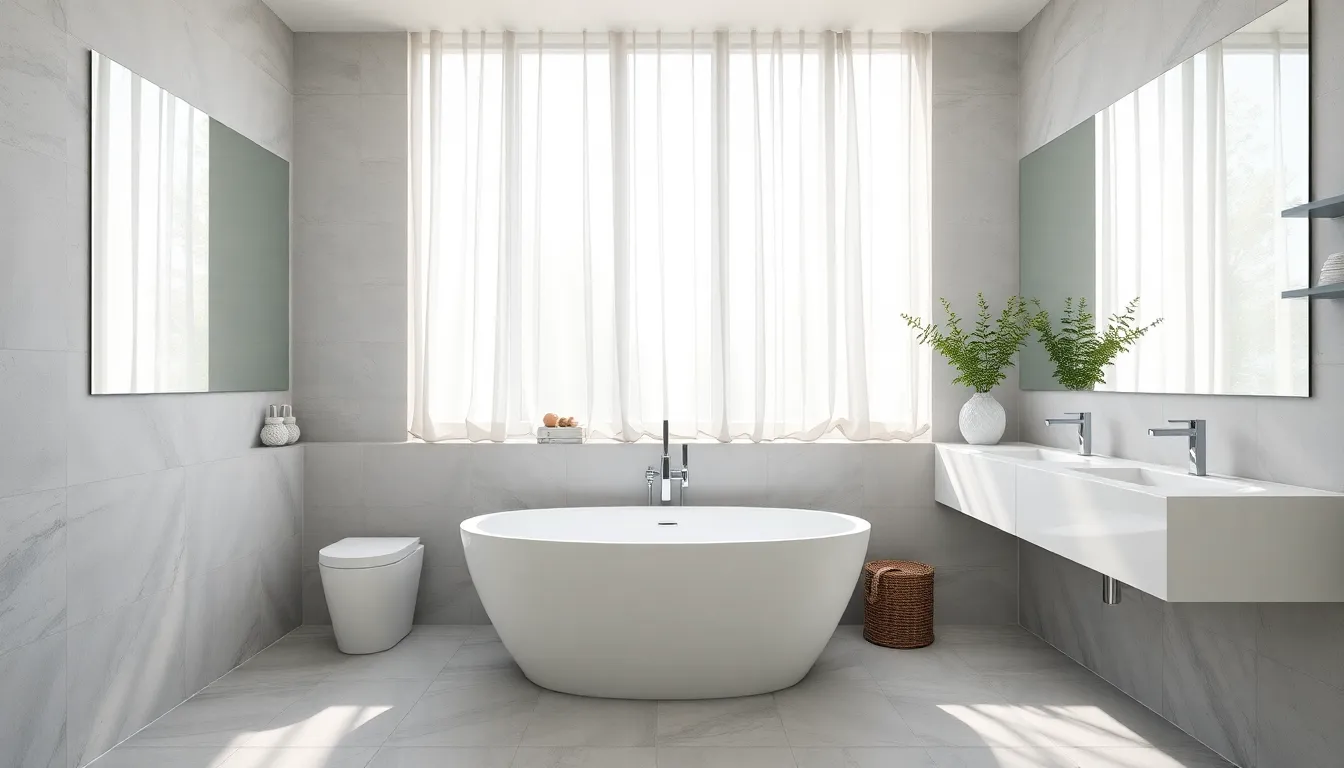
Light grey tiles serve as the perfect foundation for bathrooms that feel open, spacious, and filled with natural luminosity. We’ve discovered that these versatile tiles work exceptionally well in smaller spaces where maximizing brightness becomes essential.
Maximizing Natural Light Reflection
Strategic mirror placement opposite windows can transform how natural light moves through your bathroom space. We recommend positioning large mirrors to catch and bounce light throughout the room, creating an instantly brighter atmosphere.
Light colored decor elements work hand in hand with your grey tile selection to amplify available light sources. Choosing tiles in soft dove grey or pale charcoal ensures maximum light reflection while maintaining the sophisticated grey aesthetic you’re seeking.
Window treatments in sheer or light filtering materials allow natural light to flow freely while providing necessary privacy. We suggest avoiding heavy curtains or dark blinds that can block precious daylight from reaching your beautiful grey tile surfaces.
Pairing with White Fixtures and Accessories
Contrasting colors create visual depth when you pair light grey tiles with crisp white fixtures and accessories. This combination enhances the sophisticated modern aesthetic while ensuring your bathroom feels fresh and clean.
White bathroom vanities, toilets, and bathtubs provide striking contrast against grey tile backgrounds, making each element stand out beautifully. We love how this pairing creates definition between different areas of the bathroom.
Checkerboard patterns using white and grey tiles can add compelling visual interest to floor installations or accent walls. This classic design approach works particularly well in vintage inspired or transitional bathroom styles.
Chrome or brushed nickel fixtures complement the grey and white color scheme perfectly, adding metallic accents that enhance the overall brightness. We recommend selecting hardware finishes that reflect light rather than absorbing it.
Creating Spa-Like Atmospheres
Freestanding tubs surrounded by light grey tiles instantly create a luxurious spa like ambiance in your bathroom space. Glass shower doors enhance this modern touch while allowing light to flow freely throughout the room.
Calming colors like soft grey contribute to the serene and relaxing environment that defines spa style bathrooms. We’ve found that these muted tones help reduce visual stress and promote a sense of tranquility.
Natural materials such as stone accents or wooden vanities pair beautifully with light grey tiles to create an earthy, organic feel. This combination brings warmth to the space while maintaining the peaceful spa atmosphere.
Herringbone design patterns in light grey tiles add subtle texture and visual movement without overwhelming the serene aesthetic. We recommend this pattern for accent walls or shower surrounds where you want gentle visual interest.
Dark Grey Tiles for Bold and Sophisticated Spaces
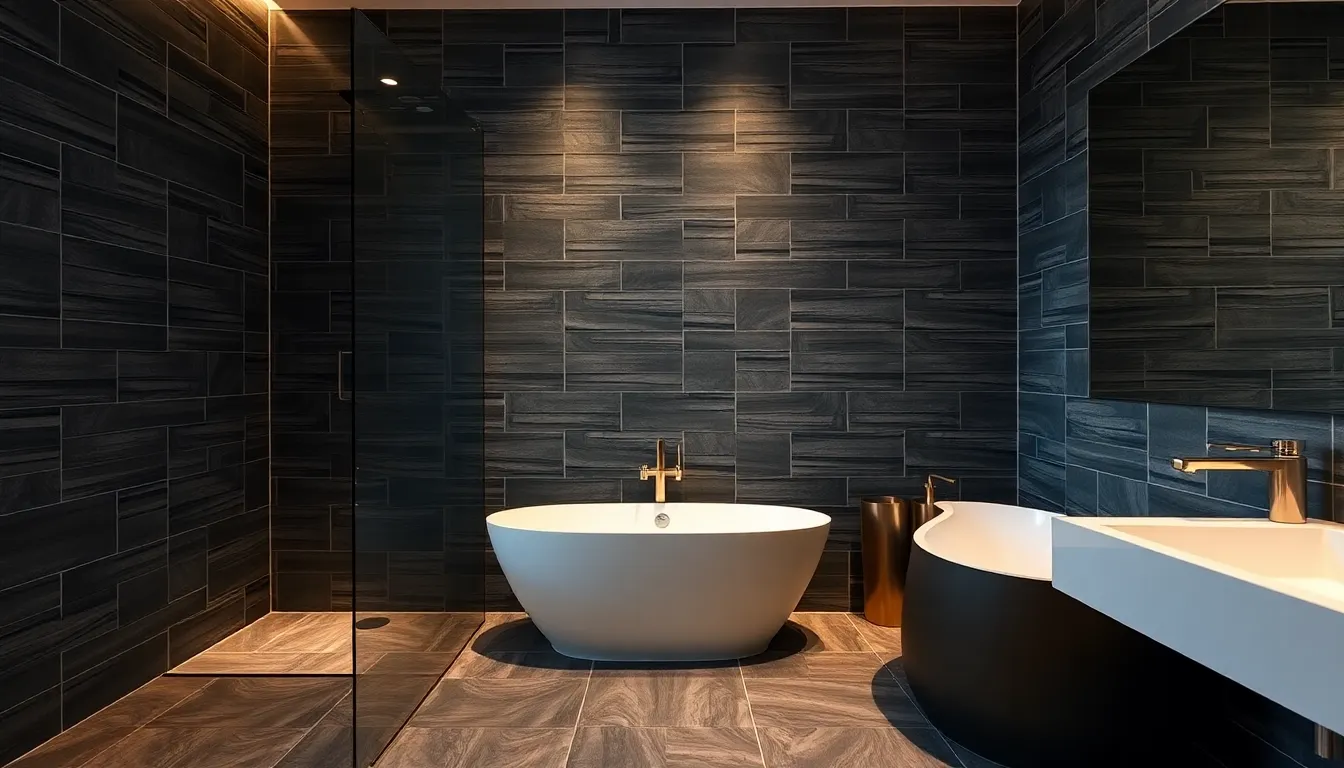
Dark grey tiles elevate bathroom design by creating dramatic focal points that exude luxury and contemporary elegance. We’ve found that these sophisticated tiles work exceptionally well in larger bathrooms where their bold presence can make a powerful statement.
Charcoal Grey Statement Walls
Charcoal grey tiles transform ordinary bathroom walls into striking architectural features that command attention. We recommend installing these dramatic tiles on a single accent wall to create visual depth without overwhelming the space. Pairing charcoal grey statement walls with dark vanities amplifies the sophisticated aesthetic while maintaining design cohesion throughout the bathroom.
Hexagon, herringbone, and chevron patterns in charcoal grey add geometric interest that enhances the wall’s visual impact. We’ve observed that these pattern variations create movement and texture that prevents the dark color from appearing flat or monotonous.
Balancing Dark Tiles with Proper Lighting
Proper lighting becomes crucial when working with dark grey tiles to prevent the space from feeling closed in or gloomy. We suggest incorporating multiple lighting layers including LED strips, pendant lights, and recessed fixtures to achieve optimal illumination. Soft, warm lighting balances the boldness of dark tiles while creating an inviting atmosphere that feels comfortable and relaxing.
Bright lighting enhances the dramatic effect of charcoal tiles by highlighting their texture and depth. We’ve found that strategic placement of lighting fixtures can create beautiful shadow play across textured dark grey surfaces, adding another dimension to the design.
Luxury Hotel-Inspired Designs
Marble and granite tiles in various grey shades create the opulent atmosphere found in high end hotels and spas. We recommend selecting these premium materials when you want to achieve a truly luxurious feel that rivals the finest hospitality spaces. Natural stone variations in grey provide unique veining patterns that make each installation distinctive and elegant.
Incorporating elements like freestanding tubs, glass partitions, and metallic fixtures enhances the luxury hotel aesthetic. We’ve seen how these design components work together with grey stone tiles to create bathrooms that feel like private retreats rather than simple functional spaces.
Grey Marble-Look Tiles for Elegant Bathroom Transformations
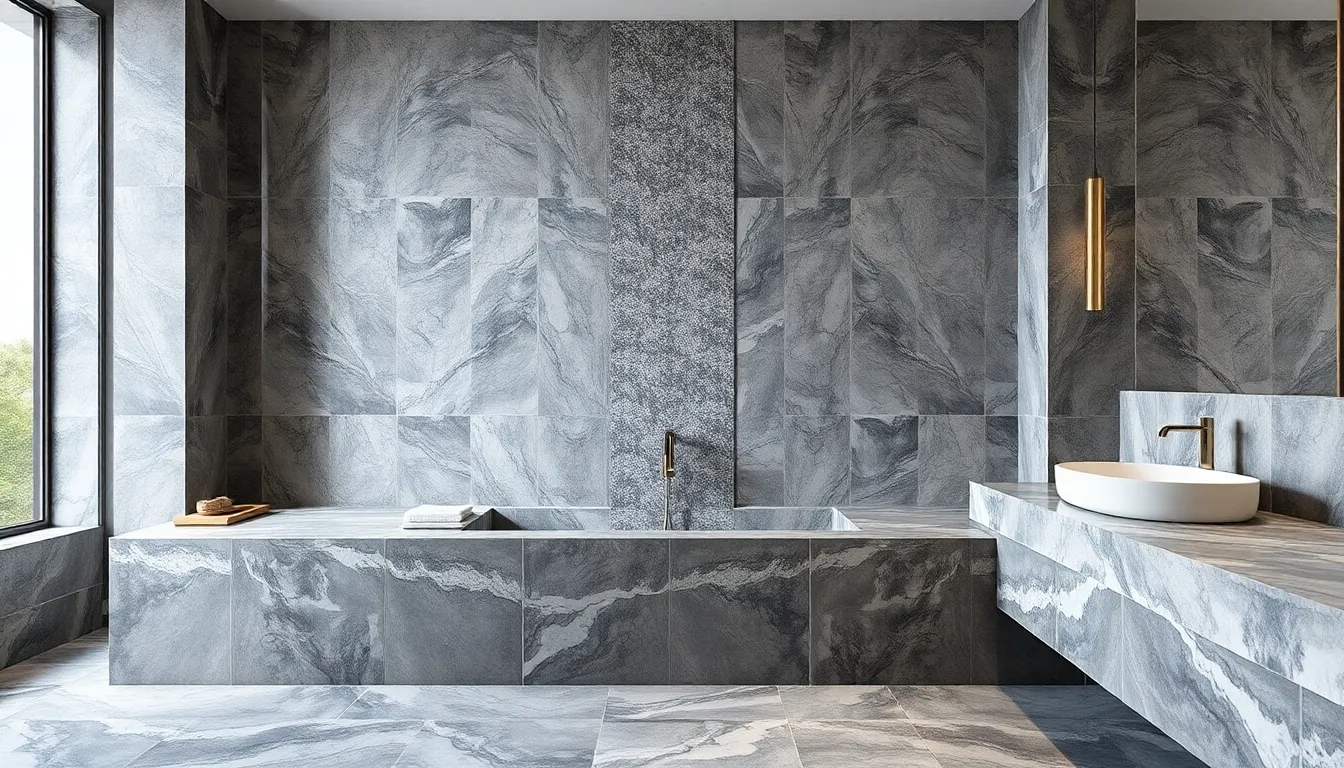
Grey marble-look tiles create an elegant and sophisticated ambiance in bathrooms without the high cost of real marble. These tiles offer the perfect balance between luxury aesthetics and practical functionality.
Veined Patterns for Authentic Marble Appearance
Veined patterns in grey marble-look tiles add depth and visual interest to your bathroom space. The intricate veining mimics natural marble’s organic formations, creating an authentic appearance that elevates the overall design. We recommend selecting tiles with subtle grey veining on lighter backgrounds for a classic Carrara marble effect.
Bold veining patterns work exceptionally well as statement walls behind vanities or in shower enclosures. These dramatic patterns draw the eye and create focal points that transform ordinary spaces into extraordinary retreats. Quality porcelain marble-look tiles feature realistic textures and color variations that closely replicate natural stone’s unique characteristics.
Installation across both floors and walls with matching veined patterns creates a cohesive design throughout the bathroom. The continuous veining flow connects different surfaces while maintaining visual harmony across the entire space.
Waterfall Installation Techniques
Waterfall installation extends grey marble-look tiles from the wall down to the floor, creating a continuous design element. This technique enhances the sense of unity and flow throughout your bathroom space. The seamless transition eliminates visual breaks and makes rooms appear larger and more luxurious.
Planning your waterfall installation requires careful consideration of tile alignment and grout lines. We suggest using large format tiles to minimize seams and create the most dramatic waterfall effect. Professional installation ensures proper waterproofing and structural support for this striking design technique.
Corners and edges need special attention during waterfall installations to maintain the continuous marble appearance. Mitred cuts at corners create clean transitions that preserve the natural veining patterns across surfaces.
Coordinating with Matching Countertops
Matching grey marble-look countertops with bathroom tiles creates a harmonious and cohesive appearance throughout the space. This unified approach maintains consistent aesthetics while eliminating the challenge of coordinating different materials and patterns.
Coordinated surfaces work particularly well in master bathrooms where vanity countertops, shower surrounds, and flooring share the same marble-look design. The consistent veining patterns create visual flow that connects different functional areas within the bathroom.
We recommend selecting countertop materials that complement your tile choice while offering superior durability for high-use surfaces. Quartz countertops with grey marble patterns provide excellent stain resistance and low maintenance requirements compared to natural stone alternatives.
Small Bathroom Grey Tile Ideas to Maximize Space
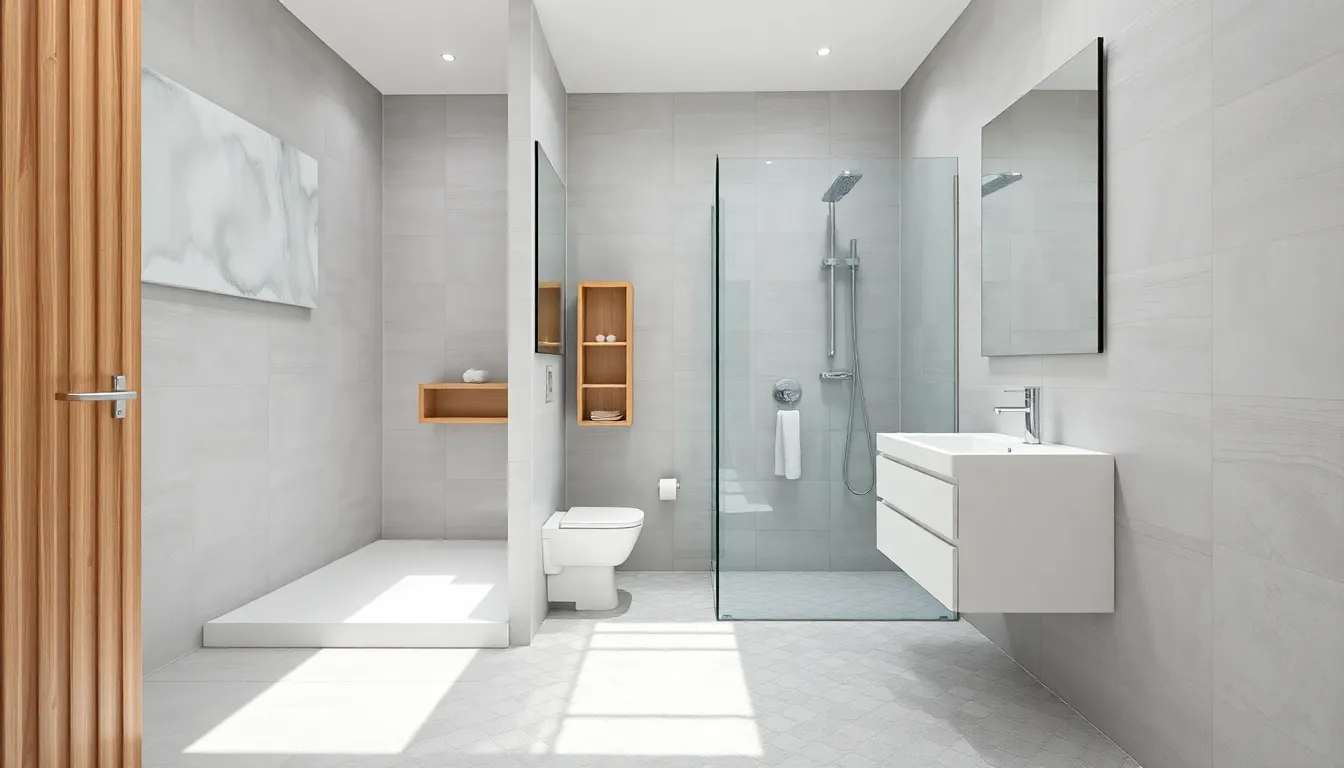
Small bathroom spaces can feel dramatically larger when we apply the right grey tile strategies. Light grey tiles offer a neutral palette that visually expands compact areas while providing endless decorating flexibility.
Strategic Tile Placement for Illusion of Size
Large format grey tiles create fewer grout lines, reducing visual clutter and tricking the eye into perceiving a bigger room. We recommend installing these tiles on both floors and walls to maintain consistency throughout the space. Vertical tile layouts draw attention upward, making walls appear taller in cramped bathrooms. Horizontal arrangements widen narrow spaces by directing the eye across the room’s width.
Subway tiles arranged vertically maximize the height illusion while maintaining that classic appeal we covered earlier. Fewer grout lines mean less visual interruption, allowing the eye to travel smoothly across surfaces. Large mirrors paired with these tile arrangements further enhance the spacious feeling by reflecting light and doubling visual depth.
Continuous Flooring for Seamless Flow
Selecting identical grey tiles for floors and shower walls ensures seamless transitions between different bathroom zones. We achieve this unified look by extending the same tile material throughout the entire space without visual breaks. Shower niches built with matching grey tiles maintain design continuity while providing essential storage.
Curbless shower entries using the same flooring tile eliminate barriers that can make spaces feel chopped up. This approach works particularly well with our light grey marble look tiles discussed in previous sections. Consistent tile selection from floor to ceiling creates an uninterrupted flow that maximizes perceived square footage.
Light Grey Options for Compact Areas
Light grey tiles reflect more natural light, creating calm and open atmospheres perfect for small bathrooms. We pair these tiles with white fixtures and natural wood accents to keep designs fresh and modern. Matte and semi gloss finishes work exceptionally well in compact spaces by diffusing light evenly across surfaces.
Hexagon patterned light grey tiles add visual interest without overwhelming limited floor space. Chevron arrangements bring subtle movement while maintaining the airy feel essential for small bathrooms. These patterns work best when we limit them to accent areas like shower floors or feature walls.
White grout lines with light grey tiles enhance brightness while maintaining clean definition between individual pieces. Chrome and brushed nickel fixtures complement these lighter tones perfectly, amplifying the spacious feeling we’re trying to achieve.
Grey Tile Accent Features and Focal Points
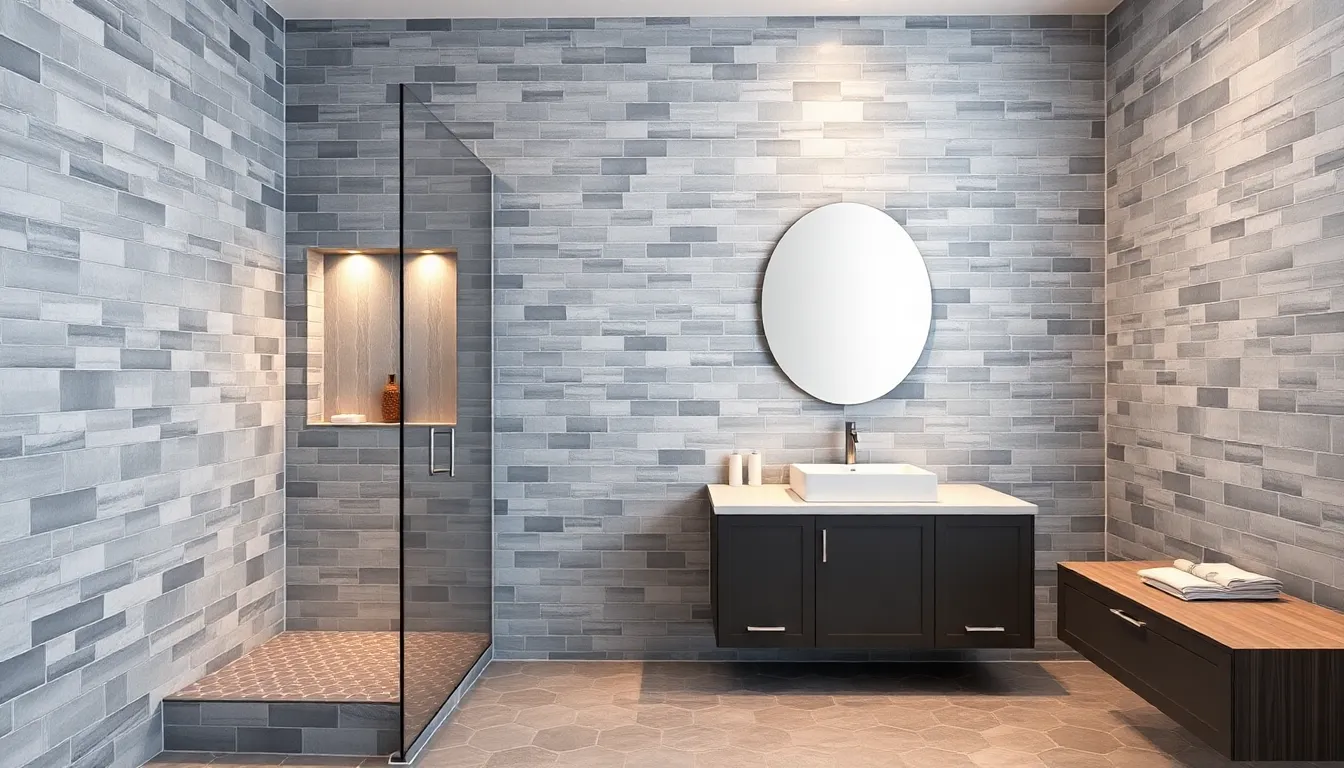
Grey tiles excel at creating strategic focal points that draw attention while maintaining the sophisticated aesthetic we’ve established throughout your bathroom design.
Niche and Shelf Detailing
Integrated shower niches transform functional storage into design elements when executed with grey tile precision. Floating grey tiled shelves offer understated elegance while providing essential storage for bath products, soaps, and decorative items. We recommend matching your niche tiles to surrounding walls for subtle sophistication, or creating contrast with different grey shades for pronounced visual interest.
Recessed wall niches gain depth and texture through grey mosaic tile applications or gradient patterns that add visual rhythm to shower walls. Bordering these features with contrasting trim or strategic lighting transforms simple storage into architectural details. Consider installing LED strip lighting within deeper niches to highlight the grey tile work and create ambient shower lighting.
Built-in corner shelves work exceptionally well with grey subway or hexagon tiles, creating clean lines that complement modern bathroom aesthetics. Installing multiple shelf levels with consistent grey tile coverage maintains visual flow while maximizing storage capacity throughout your shower space.
Shower Floor Designs with Contrasting Grout
Hexagon grey tiles paired with white grout create classic, crisp finishes that define individual tile shapes while improving slip resistance. This combination makes grime less visible compared to darker grout options, requiring less frequent deep cleaning maintenance. We’ve found this approach particularly effective in creating vintage inspired shower floors with modern functionality.
Penny round grey tiles with lighter grout lines establish timeless appeal while the smaller format provides excellent traction for wet surfaces. Large format grey tiles paired with charcoal grout deliver modern, graphic looks that emphasize clean geometric patterns across shower floors.
Contrasting grout choices significantly impact the overall visual effect of your grey tile shower floor. White grout highlights tile layouts and creates definition, while dark grout reinforces contemporary aesthetics and adds dramatic contrast to lighter grey tiles.
Backsplash Ideas Behind Vanities
Grey subway tile backsplashes introduce clean, refined looks behind bathroom vanities while serving as neutral backdrops for wood, black, or white cabinetry. Chevron and herringbone patterns in grey tile add sophisticated movement to vanity areas without overwhelming the space. We recommend extending backsplashes from countertop to ceiling for maximum visual impact.
Mosaic grey tile patterns work beautifully behind floating vanities, creating textural interest that enhances contemporary bathroom designs. Geometric or oriental patterned grey tiles add character to transitional spaces while maintaining the versatile appeal that makes grey tile so popular.
Marble and slate look grey tiles provide luxurious backsplash options that coordinate seamlessly with matching countertops or contrast beautifully with natural wood vanities. Installing these in slab format creates seamless surfaces, while smaller format installations allow for creative pattern work that personalizes your vanity area.
Conclusion
Grey tiles offer endless possibilities for creating sophisticated bathroom spaces that stand the test of time. Whether you’re drawn to light grey’s airy elegance or dark grey’s dramatic luxury we’ve shown you can achieve any aesthetic vision with thoughtful design choices.
The versatility of grey allows you to experiment with textures patterns and finishes while maintaining a cohesive look. From subway tiles to marble effects each option brings its own character to your space.
Remember that proper lighting and strategic accent placement can transform your grey-tiled bathroom from functional to extraordinary. With these design strategies you’re ready to create a bathroom that reflects both style and practicality for years to come.
Frequently Asked Questions
What makes grey tiles a popular choice for bathroom design?
Grey tiles offer exceptional versatility, blending timelessness with modern appeal. They work seamlessly with various design styles, from contemporary to traditional, and pair beautifully with other colors and materials. Grey tiles can transform ordinary bathrooms into sophisticated spaces while providing a neutral foundation that never goes out of style.
What are the best grey tile patterns for small bathrooms?
Light grey tiles in large formats work best for small bathrooms as they reduce grout lines and create visual expansion. Vertical layouts enhance height perception, while hexagon and chevron patterns add interest without overwhelming the space. Continuous flooring with identical grey tiles creates seamless transitions that make rooms appear larger.
How do I choose between light and dark grey tiles?
Light grey tiles are ideal for creating bright, airy spaces and work well in smaller bathrooms or areas with limited natural light. Dark grey tiles, like charcoal, create dramatic focal points and luxury appeal but require adequate lighting and work best in larger spaces to avoid feeling closed-in.
What installation patterns work best with grey subway tiles?
Classic horizontal layouts with white grout offer timeless appeal, while vertical stacked patterns create height illusion. Herringbone arrangements add visual energy through zigzag designs. Each pattern requires careful planning and alignment, with herringbone needing extra consideration for balanced tile placement and professional installation.
How can I create a spa-like atmosphere with grey tiles?
Use light grey tiles as your foundation and pair them with natural materials like wood accents. Install tiles in herringbone patterns for subtle texture, incorporate freestanding tubs, and maximize natural light with strategic mirror placement. White fixtures and chrome accessories enhance the serene, spa-like aesthetic.
What grout color should I use with grey tiles?
For a seamless, modern look, use grey grout that matches your tile color to minimize grout lines. White grout creates contrast and highlights tile patterns, making it ideal for subway tiles or when you want to emphasize the tile layout. The choice depends on your desired aesthetic outcome.
Are textured grey tiles suitable for bathroom walls?
Yes, textured grey tiles add depth and character to bathroom walls. Natural stone-look porcelain options provide luxurious aesthetics without maintenance concerns, while slate-inspired finishes bring rustic charm. 3D wall tiles create dramatic effects when strategically placed with proper lighting to enhance visual impact.
How do I maintain the minimalist look with large format grey tiles?
Install large format grey tiles floor-to-ceiling for a cohesive appearance, use rectified edge tiles with minimal grout lines, and choose grey grout matching the tile color. Layer different grey shades strategically and pair with white fixtures or natural wood accents for a balanced contemporary finish.
